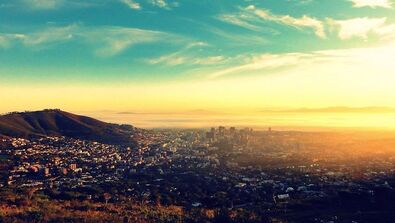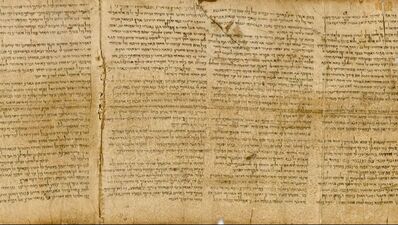Wayfinders is a collaborative learning environment in the making. At the heart of this initiative is a critical realist pursuit of traction on reality, a kind of seeing and hearing and grasping that enables intentional being and living: an interdisciplinary project that will serve as the curriculum for a life-skills course for adult learners.
Traction on reality
The project is comprehensive in scope and ongoing. The vision is to develop a sort of map of reality, exploring and enabling possibilities in human understanding and human being. What's emerging is a dynamic and systematic phenomenology of life.
Dynamic because it remains open, always subject to revision to make room for new data and new insights. Systematic because it makes sense of the whole by differentiating its parts to discern how it all coheres. A phenomenology of life because it explores reality from within, experientially, and comprehensively. The point is to make sense of life, all of life, for the sake of human flourishing.
A wayfinding collaborative
Given the nature and scope of this undertaking, Wayfinders is meant to be a collaborative project. Exactly what that would look like depends on the shape it takes as it continues to develop. So far it's been the work of one observer and learner coming from the Christian tradition, initially just trying to find my way in the world: What sort of world is this, and what sort of world should it be, given that we tend to disagree on these very questions I'm asking?
Intellectual hospitality
As a collaborative project, this would be a transcultural and transdenominational Christian venture and offering—a creative learning environment hosted by learners that welcome insights from perspectives other than our own.
The overall framework of the project is decidedly biblical and Christian: it echoes the gospel and inhabits the narrative-world of the Bible. But it also assumes, just as science does, that there's only one reality. A reality accessible to all, wherever we come from. It meets the reader in that world. A world that is contested territory but that is also common ground. The project embodies an ancient way forward: to welcome all truth as God's truth, wherever we find it. Our invitation is: come and see. Our request is: show us, we want to see. This calls for humble and fearless intellectual hospitality. It's what it takes for real traction on reality.
Of course, for Christians, such humble confidence is only possible if the gospel = reality. A central aim of this project is to discover and to show how this is indeed the case. Another important aim of the project is to empower readers with the resources needed to find their own way in the world, whatever their conclusions might be at the end of the day.
The project communicates primarily through secular discourse, finding common ground in science, history, and human experience in general. It poses the big questions of faith and God via questions of meaning and ultimate meaning, which is the natural way to get at them. It laids out the options available regarding the ultimate meaning of our existence before it explores the nature of things, and what it means to be human, according to the Scriptures: the inexhaustible possibilities, and the responsibilities, entrusted to the children of God.
Traction on reality
The project is comprehensive in scope and ongoing. The vision is to develop a sort of map of reality, exploring and enabling possibilities in human understanding and human being. What's emerging is a dynamic and systematic phenomenology of life.
Dynamic because it remains open, always subject to revision to make room for new data and new insights. Systematic because it makes sense of the whole by differentiating its parts to discern how it all coheres. A phenomenology of life because it explores reality from within, experientially, and comprehensively. The point is to make sense of life, all of life, for the sake of human flourishing.
A wayfinding collaborative
Given the nature and scope of this undertaking, Wayfinders is meant to be a collaborative project. Exactly what that would look like depends on the shape it takes as it continues to develop. So far it's been the work of one observer and learner coming from the Christian tradition, initially just trying to find my way in the world: What sort of world is this, and what sort of world should it be, given that we tend to disagree on these very questions I'm asking?
Intellectual hospitality
As a collaborative project, this would be a transcultural and transdenominational Christian venture and offering—a creative learning environment hosted by learners that welcome insights from perspectives other than our own.
The overall framework of the project is decidedly biblical and Christian: it echoes the gospel and inhabits the narrative-world of the Bible. But it also assumes, just as science does, that there's only one reality. A reality accessible to all, wherever we come from. It meets the reader in that world. A world that is contested territory but that is also common ground. The project embodies an ancient way forward: to welcome all truth as God's truth, wherever we find it. Our invitation is: come and see. Our request is: show us, we want to see. This calls for humble and fearless intellectual hospitality. It's what it takes for real traction on reality.
Of course, for Christians, such humble confidence is only possible if the gospel = reality. A central aim of this project is to discover and to show how this is indeed the case. Another important aim of the project is to empower readers with the resources needed to find their own way in the world, whatever their conclusions might be at the end of the day.
The project communicates primarily through secular discourse, finding common ground in science, history, and human experience in general. It poses the big questions of faith and God via questions of meaning and ultimate meaning, which is the natural way to get at them. It laids out the options available regarding the ultimate meaning of our existence before it explores the nature of things, and what it means to be human, according to the Scriptures: the inexhaustible possibilities, and the responsibilities, entrusted to the children of God.
It is sometimes mistakenly thought that what we are ultimately after is consensus, so that a single hold-out spoils the whole enterprise. What we are truly after, however, is our own best understanding of a common, ontologically independent reality. Although that judgement is rationally made only in social dialogue with others, if we are truly seeking to be rational about our beliefs, it is each of us, ourselves, whom we are each ultimately trying to convince.
–Margaret Archer, Andrew Collier and Douglas Porpora
–Margaret Archer, Andrew Collier and Douglas Porpora
My son, if you accept my words
and store up my commands within you,
turning your ear to wisdom
and applying your heart to understanding
—indeed, if you call out for insight
and cry aloud for understanding,
and if you look for it as for silver
and search for it as for hidden treasure,
then you will understand the fear of the Lord
and find the knowledge of God.
(Prov 2:1-5)
Trust the Lord with all your heart, and lean not on your own understanding. In all your ways acknowledge him, and he will make your paths straight.
(Prov 3:5-6)
and store up my commands within you,
turning your ear to wisdom
and applying your heart to understanding
—indeed, if you call out for insight
and cry aloud for understanding,
and if you look for it as for silver
and search for it as for hidden treasure,
then you will understand the fear of the Lord
and find the knowledge of God.
(Prov 2:1-5)
Trust the Lord with all your heart, and lean not on your own understanding. In all your ways acknowledge him, and he will make your paths straight.
(Prov 3:5-6)


